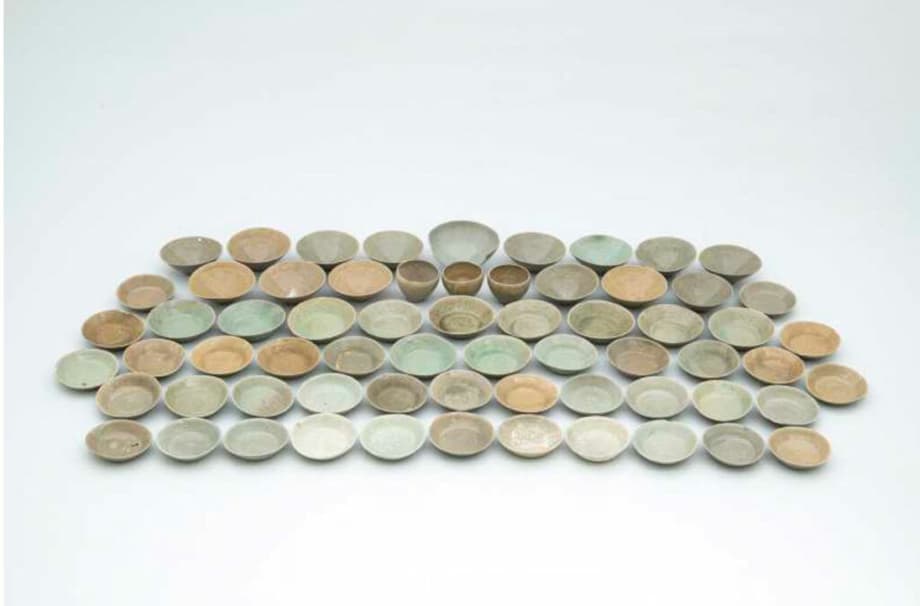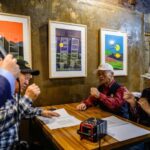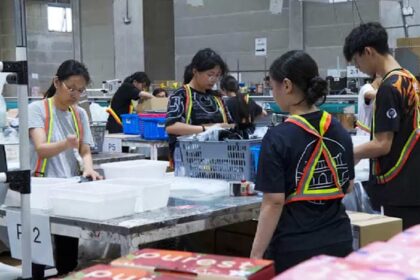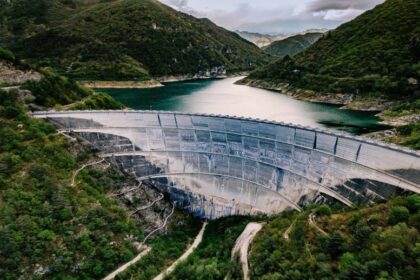A rare Joseon cargo ship resurfaces after six centuries
South Korean maritime archaeologists have raised the remains of a cargo vessel known as Mado 4 from the seabed off Taean on the west coast. The ship, which sank around 1420 in the early Joseon period, is the first fully excavated Joseon era ship recovered in the country. Its hull and cargo offer a detailed look at how the kingdom moved tax grain and official goods along coastal routes to the royal capital of Hanyang, today called Seoul. The discovery turns a line in historical records into a working piece of state infrastructure that can be examined, measured, and preserved.
- A rare Joseon cargo ship resurfaces after six centuries
- What the cargo and tags reveal about Joseon logistics
- A closer look at the ship design and repairs
- Raising and preserving a waterlogged ship
- A new lead on an older Goryeo era wreck
- Why Taean waters hide so many ships
- What the find changes for Korean maritime history
- Key Points
The National Research Institute of Maritime Cultural Heritage led the effort after a decade of research and conservation at the site, which was first detected in 2015. More than 120 artifacts had already been brought up, including wooden cargo tags inked with departure and destination, containers of state rice, and buncheong porcelain prepared for government use. The tags link the voyage to the grain depot at Naju in South Jeolla Province, with a destination at Gwangheungchang in Hanyang, a major state warehouse at Mapo on the Han River. The cargo and the route fit the state run logistics system known as joun, which ferried tax rice, tribute ceramics, and other official consignments from provincial depots to the capital.
Officials say the recovery is more than a single shipwreck. It revives a missing piece of the machinery that kept a premodern state supplied with food and goods.
An institute official said: “This is not just a ship. It is the physical infrastructure of the Joseon state coming back to light. It reveals how an early bureaucracy moved food, goods, and information over long distances.”
Findings from the hull itself have surprised researchers. The vessel carried twin masts rather than a single mast, a configuration that points to greater speed and control in rough water. Sections of the hull show repairs with iron nails, which is the first confirmed use of metal fasteners on a traditional Korean vessel. Earlier scholarship held that shipbuilders in this period relied on wooden joints and pegs alone. The raised structure now begins a preservation process in Taean that will take many years, while selected artifacts are on public view.
What the cargo and tags reveal about Joseon logistics
Rice was the backbone of state finance in early Joseon. Many households paid taxes in grain, called segok, which the government collected in regional warehouses. Moving that grain to the capital required a reliable transport network that combined river and sea routes, seasonal schedules, and official oversight. The joun system organized ships, crews, manifests, and timing, and tracked consignments with wooden tags and registers. Mado 4 shows how that network worked in practice. Its cargo tags and ceramics match the state’s needs, and its route from the southwest coast to the capital aligns with known pathways used by official vessels.
Investigators cataloged 63 wooden cargo tags, along with 152 pieces of buncheong ware intended for royal service and high officials. Some ceramic pieces bear markings connected to the Naeseomsi, the royal office that managed food and drink for the court. The tags themselves are simple, durable, and functional. They name the depot at Naju and the destination at Gwangheungchang in Hanyang. Gwangheungchang, located at Mapo, served as a major landing and storage facility where tax grain could be tallied, processed, and distributed. Together, the tags and tableware confirm that the ship’s voyage was an arm of state administration, not a private commercial run.
Many details of daily work at sea are also present. Timber beams used to brace cargo were recovered, as were containers that once held rice. These traces show practical methods to keep bulk grain dry and stable in tidal waters. Crew routines are not directly recorded, but the equipment hints at disciplined loading and careful stowage. The efficiency of a ship like Mado 4 mattered, since grain paid soldiers, fed laborers, and supplied offices in the capital.
From Naju to Hanyang
The voyage from Naju required careful navigation through strong tides and rocky passages on the west coast. The coast of Taean is full of shallows and narrow channels. Tides move quickly, visibility drops in foul weather, and reefs can be unforgiving. Researchers believe these conditions likely caused the sinking and then protected the hull under layers of sand and silt. The route was common for official vessels, which preferred coastal sailing with frequent stops for shelter and resupply. The same features that helped navigation in good weather, the islands and channels of the coast, could trap a ship when currents shifted.
A closer look at the ship design and repairs
Archaeologists say Mado 4 offers a rare window into early Joseon shipbuilding. The most striking feature is its twin mast layout. Earlier Korean ships often had a single mast. On Mado 4, the mast positions appear to be at the bow and near the center. That arrangement would spread power across two sails. It also gives a captain more options to trim the rig in tight channels or when fighting crosswinds.
Twin masts for speed and control
Two masts can carry more sail in a flexible arrangement than one tall mast. In strong tides, the crew could reef or drop a forward sail and keep a main sail to maintain headway, or reverse that plan to pivot more quickly. Twin masts also make it easier to balance the ship under different loads. For a freight carrier moving heavy rice and ceramics, a layout that helped control the bow and reduce turning radius would be a logical improvement.
First evidence of iron nails in a Korean hull
Traces of iron nails in repaired sections are a first for a traditional Korean vessel. The primary structure still uses wooden joints and numerous small pegs, with planks laid horizontally for strength. The iron appears in later fixes, which suggests practical adaptation during the ship’s service life. If a plank split or a seam opened, a smith and shipwright could stabilize it quickly with nails. The discovery resets assumptions about materials available to craftsmen and about maintenance culture in the early fifteenth century. It shows a blend of time tested joinery with targeted use of metal when crews needed fast reinforcement.
Raising and preserving a waterlogged ship
The Mado 4 site was investigated for years before the hull was lifted. Investigators first recovered artifacts and covered exposed timbers with sand to protect them from currents and organisms. In the most recent campaign, teams recovered 107 wooden structural components and then raised the remaining hull. Measurements show a hull about 12 meters long and 5 meters wide (39 feet by 16 feet). On the starboard side, rows of planking survive up to 11 layers high. This level of preservation helps experts reconstruct how timbers were joined and how the hull flexed under load.
Waterlogged wood must be treated with care once it is out of the sea. The first step is desalination, long baths that draw out salt and minerals. Conservators then stabilize the wood so it does not warp or crack as it dries. That process can include steady control of humidity and gentle chemical treatments that replace water in the cellular structure. The work is slow by design. The institute estimates that full restoration of the hull will take about 15 years, a timeframe in line with other large maritime conservation projects.
While conservation proceeds in Taean, the public can see a curated selection of artifacts. A special exhibition titled The Nation’s Ship That Sailed the Sea is running at the Taean Maritime Museum. It opened in September and is scheduled through February 2026. For visitors, the cargo tags, ceramics, and rice containers provide a tangible link to the ship’s role in state service, even as the hull undergoes its lengthy treatment nearby.
A new lead on an older Goryeo era wreck
The same survey that raised Mado 4 revealed another find in nearby waters. Sonar mapping and underwater dives located two bundles of celadon ceramics, a wooden anchor, and a cargo support log. Investigators dated the ceramics to the mid twelfth century, roughly 1150 to 1175. If confirmed as a single wreck site, it would be the oldest known shipwreck found in Korea, predating Mado 4 by more than two centuries. The discovery offers a rare look at maritime life in the Goryeo period, when Korean celadon was prized across East Asia.
The 87 celadon items include plates, bowls, and cups, some made with pressed relief designs. Researchers note pieces shaped like spinning tops and conical hats, forms associated with mid twelfth century styles. The cargo composition suggests tableware that may have been intended for mid to lower ranking officials, along with staples such as grain. The wooden anchor and associated timbers could allow a reconstruction of hull size and build once a full excavation begins.
Archaeologists refer to this potential site as Mado 5. It sits in the same maritime corridor that produced earlier finds, including Mado 1, Mado 2, and Mado 3, which date to the early and mid thirteenth century. The coast of Taean has already yielded a large trove of Goryeo celadon from a 2007 discovery. The new material points to regular, organized movement of goods through the Mado strait well before Joseon unified and systematized coastal transport.
Why Taean waters hide so many ships
Geography explains much of the archaeology. The west coast is shallow and cut by fast tides. Channels between islands funnel water and create strong cross currents. Hidden rocks and shifting sandbars complicate navigation, especially in foul weather. Period sailors preferred to hug the coast for safety, which meant threading through narrow passages that punish even small errors. The same conditions that make accidents more likely can bury and preserve a wreck under silt soon after it settles on the bottom.
Historical accounts describe the Mado strait as a common stopover for tribute and tax vessels, a place to take shelter, transfer goods, or wait out a storm. Records note that around 200 ships went down in the Taean region between 1392 and 1455. Since local fishers found a wreck in 2007, the area has become a focus for underwater archaeology. More than a dozen shipwrecks have been documented, revealing a maritime corridor that supported state finance, court culture, and domestic distribution across centuries.
What the find changes for Korean maritime history
Mado 4 turns a textbook description of state logistics into a working example. It provides the first physical evidence of a segok transport ship tied directly to the joun system. The twin mast setup shows that early Joseon shipwrights pursued speed and maneuverability, a sensible choice for a vessel that had to keep a tight schedule through difficult straits. Traces of iron nails in repairs show a practical approach to maintenance that used whatever worked best at the time, wood or metal.
The ship’s purpose comes through in its cargo. Rice, tribute ceramics, and tagged manifests tie the vessel to a network of provincial depots and capital warehouses. The find helps scholars cross check written sources and refine timelines for materials and methods. Future work on timbers and tool marks, along with a full study of the Goryeo era ceramics nearby, will add new detail to Korea’s long history of shipbuilding and state supply by sea.
Key Points
- Mado 4, a cargo ship that sank around 1420, has been raised off Taean on Korea’s west coast after a decade of research and conservation.
- The ship is the first fully excavated Joseon era vessel recovered, offering a rare, complete look at state transport by sea.
- Artifacts include 63 wooden cargo tags and 152 pieces of buncheong ware tied to royal service, along with containers of tax rice.
- Tags show a voyage from Naju to Gwangheungchang in Hanyang, part of the state run joun network that moved tax grain and official goods.
- The hull features twin masts for speed and control, and shows repairs made with iron nails, the first confirmed use of metal fasteners on a traditional Korean ship.
- Measured hull remains are about 12 meters by 5 meters, with starboard planking preserved up to 11 layers high.
- Conservation will take many years, with desalination and careful stabilization underway in Taean; select artifacts are on display through February 2026.
- Nearby, 87 celadon pieces dated to 1150 to 1175 point to a new Goryeo era shipwreck, which could become the oldest known wreck in Korea if confirmed.
- The Taean coast is now a major underwater archaeology zone, with more than a dozen wrecks mapped in a corridor shaped by fast tides and rocky channels.












